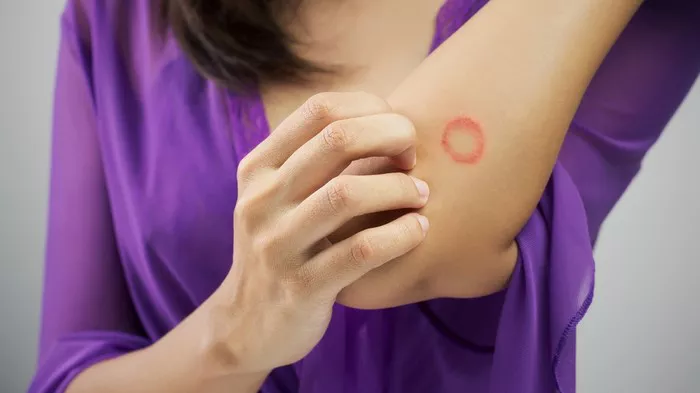Skin infections can often be confusing, especially when it comes to distinguishing between different conditions like ringworm and cold sores. Ringworm, despite its name, is not caused by a worm but rather a fungal infection of the skin. Cold sores, on the other hand, are caused by the herpes simplex virus. Despite the differences in their causative agents, misconceptions sometimes arise regarding whether ringworm can cause cold sores or vice versa. In this article, we will delve into the details of these two conditions, exploring their causes, symptoms, and potential links.
Understanding Ringworm
Let’s start by clarifying what ringworm is and how it manifests. Ringworm, also known as dermatophytosis or tinea, is a fungal infection that affects the skin, scalp, or nails. Contrary to its name, there are no worms involved in this condition. The term “ringworm” comes from the characteristic red, circular rash that often develops on the skin affected by the fungus.
The fungi responsible for ringworm belong to a group called dermatophytes, which thrive in warm, moist environments and can infect the skin through direct contact with an infected person or animal, or by touching contaminated objects or surfaces. The most common types of ringworm include:
- Tinea corporis: This affects the skin on the body, causing red, scaly patches that may itch or burn. The rash often has a distinct raised border.
- Tinea capitis: This affects the scalp and hair, leading to hair loss and scaling of the scalp. It is more common in children.
- Tinea pedis: Also known as athlete’s foot, this affects the feet, particularly between the toes, causing itching, redness, and peeling skin.
- Tinea cruris: Commonly known as jock itch, this affects the groin area and inner thighs, causing a red, itchy rash.
Exploring Cold Sores
Cold sores, or fever blisters, are caused by the herpes simplex virus (HSV). There are two main types of HSV: HSV-1 and HSV-2. HSV-1 is the primary cause of oral herpes infections, which result in cold sores around the mouth and lips. HSV-2, on the other hand, is typically associated with genital herpes, although either type can cause sores in both areas.
Cold sores usually begin with a tingling or burning sensation around the lips, followed by the appearance of small, fluid-filled blisters. These blisters can be painful and may burst, leaving behind crusty sores that eventually heal within a few weeks. Cold sores are highly contagious and can spread through direct contact with the affected area, such as kissing or sharing utensils.
Addressing the Link Between Ringworm and Cold Sores
Given the distinct nature of ringworm and cold sores, it is important to clarify that ringworm cannot cause cold sores. Ringworm is a fungal infection caused by dermatophytes, whereas cold sores are caused by a viral infection with herpes simplex virus.
However, confusion may arise because both ringworm and cold sores are skin conditions that can cause discomfort and visible symptoms. Additionally, individuals with weakened immune systems may be more susceptible to various infections, including fungal and viral ones like ringworm and cold sores, respectively.
Distinct Causes and Treatment Approaches
The causative agents for ringworm and cold sores are fundamentally different, leading to distinct approaches in diagnosis and treatment.
1. Ringworm Treatment
Ringworm is typically treated with antifungal medications, either as topical creams or ointments for mild cases, or oral antifungal medications for more severe or widespread infections. Keeping the affected area clean and dry can also help prevent the spread of the fungus.
2. Cold Sore Treatment
Cold sores caused by herpes simplex virus are managed differently. Antiviral medications can help reduce the severity and duration of symptoms, especially if taken at the first sign of an outbreak. Over-the-counter creams and ointments can provide relief from pain and discomfort. It’s important to note that the herpes virus remains in the body for life, and outbreaks can recur intermittently.
Conclusion
In summary, ringworm and cold sores are distinct skin conditions caused by different pathogens—fungi and viruses, respectively. Ringworm cannot cause cold sores, and vice versa. It’s crucial to seek appropriate medical advice and treatment for these conditions to ensure effective management and prevent their spread to others.
If you suspect you have ringworm or cold sores, consult a healthcare professional for an accurate diagnosis and appropriate treatment plan. Remember, early intervention and proper hygiene practices are key to managing these skin infections effectively and preventing their recurrence.
Related Topics:

























